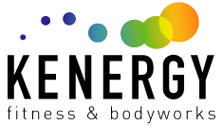My focus is based in movement and functional EFFICIENCY. For the most part I am working with acrobats, athletes, dancers, crossfit-ers that need near immediate function with limited downtime with the ability to continue to train and achieve their personal goal. My level of specificity and concentration has increased exponentially. This combined of close to 30 years of personal training and coaching and my CSCS (Certified Strength and Conditioning Specialist) background, I have the ability to strengthen and bolster the soft tissue work (which also includes muscles, tendons, nerves, ligaments and joint capsules) to help tune up the extreme athlete to dancers to the micro-tuning of a long sitting time data specialist. Let me know if I can help.
DEEP TISSUE
Designed to relieve severe tension in the muscle and the connective tissue or fascia. This type of massage focuses on the muscles located below the surface of the top muscles. Deep tissue massage is often recommended for individuals who experience consistent pain, are involved in heavy physical activity, such as athletes, and patients who have sustained physical injury. It is also not uncommon for receivers of Deep Tissue Massage to have their pain replaced with a new muscle ache for a day or two. Deep tissue work varies greatly. What one calls deep tissue another will call light. When receiving deep tissue work it is important to communicate what you are feeling.[2]
MYOFASCIAL
Myofascial release is a form of soft tissue therapy used to treat somatic dysfunction and accompanying pain and restriction of motion. This is accomplished by relaxing contracted muscles, increasing circulation, increasing venous and lymphatic drainage, and stimulating the stretch reflex of muscles and overlying fascia.[2]
SPORTS
Sports massage is actually a form of Swedish massage that is delivered to athletes. Most commonly, sports massage focuses on increasing blood and lymphatic fluid flow, reducing and eliminating pain as well as tender trigger points, and increasing range of motion of the affected area. Sports massages can be broken into 4 distinct types - the pre-event sports massage, the post-event sports massage, the restorative sports massage and the rehabilitative sports massage. As the names indicate, each type of sports massage has a different focus for the athlete as they are delivered at different times during their training and performance schedule.[1]
SWEDISH
Swedish massage uses five styles of long, flowing strokes to massage. The five basic strokes are effleurage (sliding or gliding), petrissage (kneading), tapotement (rhythmic tapping), friction (cross fiber) and vibration/shaking. Swedish massage has shown to be helpful in reducing pain, joint stiffness, and improving function in patients with osteoarthritis of the knee over a period of eight weeks. It has also been shown to be helpful in individuals with poor circulation. The development of Swedish massage is credited to Per Henrik Ling, though the Dutch practitioner Johan Georg Mezger adopted the French names to denote the basic strokes. The term "Swedish" massage is not really known in the country of Sweden, where it is called "classic massage". [2]
TRIGGER POINT THERAPY
Trigger points or trigger sites are described as hyperirritable spots in skeletal muscle that are associated with palpable nodules in taut bands of muscle fibers. Trigger point practitioners believe that palpable nodules are small contraction knots[ambiguous] and a common cause of pain. Compression of a trigger point may elicit local tenderness, referred pain, or local twitch response. The local twitch response is not the same as a muscle spasm. This is because a muscle spasm refers to the entire muscle entirely contracting whereas the local twitch response also refers to the entire muscle but only involves a small twitch, no contraction. The trigger point model states that unexplained pain frequently radiates from these points of local tenderness to broader areas, sometimes distant from the trigger point itself. Practitioners claim to have identified reliable referred pain patterns, allowing practitioners to associate pain in one location with trigger points elsewhere. [2]
SHIATSU
Shiatsu (指圧) ("shi" meaning finger and "atsu" meaning pressure.) is an eastern (oriental) born therapy that uses pressure applied with thumbs, fingers and palms to the same energy meridians as acupressure and incorporates stretching. It also uses techniques such as rolling, brushing, vibrating, grasping and in one particular technique developed by Suzuki Yamamoto, pressure is applied with the feet on the persons back, legs and feet (special set up is required for the "foot" shiatsu).[2]
ACTIVE RELASE THERAPY (ART)
ART is a patented, state of the art soft tissue system/movement based massage technique that addresses problems with muscles, tendons, ligaments, fascia and nerves. Headaches, back pain, carpal tunnel syndrome, shin splints, shoulder pain, sciatica, plantar fasciitis, knee problems, and tennis elbow are just a few of the many conditions that can be resolved quickly and often permanently with ART. These conditions all have one important thing in common: they are often a result of overused muscles.
POINT SPECIFIC THERAPY/CUSTOM MASSAGE
Ken Do you have a very specific injury? Unsure which type of massage you want? Ken can take you through each type of massage to discover what type of massage works best for you! Just ask Ken when you schedule your appointment.
[1] Content Copyright ProfessionalPlanets.com LLC dba MassagePlanet.com
[2] Content Obtained from Wikipedia.com.
